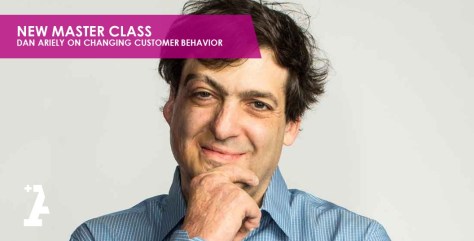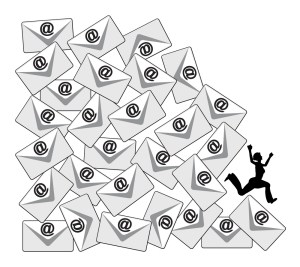Fair Game? How many average workers’ salaries does it take to pay the CEO?
Inequality is an important topic and one that politicians and scholars spend a lot of time thinking about. But what does the general public think about inequality and the many ways it manifests in daily life? And how do factors like age, gender, or political leanings relate to our views on inequality?
Those are the questions we are exploring with Fair Game?, our new app that asks users what they think about the world as it is today and what they would want in a fair world.
We’re asking users about 13 different topics related to inequality, from wage gaps to opportunities for education, and will be sharing our findings every few days now through mid-November.
Please join us and play along by downloading Fair Game? from iTunes or Google Play. We’ll release a new question every few days until we get through all 13.
You can think about the first topic right now.
So far, the data show a consistent knowledge gap.
Our users estimate that the average CEO’s pay is equal to 151 average worker salaries. In reality, the average CEO makes the same as 303 average workers combined. What do people think CEOs should be paid in a fair world: the same as 72 average employees combined.
We also found some interesting patterns in what people think.
Younger people estimate the ratio of CEO pay to average worker pay to be larger than others do, and also think a larger ratio is fair. Perhaps younger people have lower salaries and therefore think the average worker’s salary is lower? Or they are looking ahead to larger, CEO-like salaries in the future, and that influences what they think is fair?
What about gender?
It is notable that males and females arrive at the same number for what would be fair (72 average worker salaries for each CEO), but differ in what they think currently exists in the world (158 for males vs. 140 for females). Perhaps the gender wage gap influences the perception of what salaries are in the world?
And political leaning?
People who identify as conservative and those who identify as liberal give similar estimates of what the current CEO to average worker salary is (149:1 and 152:1, respectively). But political leaning makes a big difference in what people think what would be fair. Liberal respondents believe 63:1 would be fair, whereas conservative respondents believe that 93:1 would be fair.
It is encouraging that political leaning does not dramatically change our respondents’ perceptions of the world. Both conservatives and liberals underestimate the magnitude of executive pay relative to worker pay in the United States. But their differing assessments of what would be fair suggests that conservatives and liberals might choose different approaches to reducing the executive-to-worker pay ratio.
Executive compensation is by no means a simple issue. In fact, the 2016 Nobel Prize in economics was awarded to researchers who considered how motivational factors should be related to pay, bonuses, stock compensation and the timeframe of company performance in order to achieve optimal levels. One of the winners, Bengt Holmström, told a reporter after hearing he had won, that he thought executive bonuses were “extraordinarily high” and compensation contracts were too complicated.
Has it always been like this? The ratio of executive pay to worker pay was 20-to-1 in 1965, when CEOs earned an average of $832,000 annually, compared to $40,200 for workers (adjusted for today’s dollars). In 2000, the number peaked at 376-to-1, and has since settled back down to the recent level of 303-to-1 (and some estimates are as low as 216-to-1). This increased ratio means that CEO compensation has risen dramatically over the past few decades, but the average worker compensation has not. In 2014 the average CEO made $16,316,000 compared to the $53,200 made by the average worker.
In an effort to promote greater transparency, the Securities and Exchange Commission will soon require every publicly traded company in the United States to disclose this ratio. A recent bill proposed in the California Senate calls for instituting a sliding scale of corporate taxation, with companies paying different tax rates based on their ratios and sharper increases for those with CEO to average worker pay ratios greater than 100-to-1. Other proposals for reducing the ratio and social ramifications of large gaps in companies include greater profit-sharing across employees and a more consistent relationship between (long-term) performance and bonuses.
A new online course for social entrepreneurs
At the Startup Lab (my incubator at Duke University’s Center for Advanced Hindsight), we aim to empower early stage startups to build better consumer health and finance products by teaching them how to apply both the findings and methods of behavioral economics to their products and business models.
 While the in-depth Startup Lab program is limited to a small group of startups that go through our rigorous application process, it would be an injustice to not share some of its lessons with the greater community. So I’ve collaborated with +Acumen to create an online course to help social entrepreneurs make an impact – by designing products that change consumer behaviors for good. But what I am most excited about is the lesson on experimentation. I am always getting questions about how startups can experiment within their small companies (with few resources, especially time), and this course provides the tools for entrepreneurs to take a systematic approach to experimentation.
While the in-depth Startup Lab program is limited to a small group of startups that go through our rigorous application process, it would be an injustice to not share some of its lessons with the greater community. So I’ve collaborated with +Acumen to create an online course to help social entrepreneurs make an impact – by designing products that change consumer behaviors for good. But what I am most excited about is the lesson on experimentation. I am always getting questions about how startups can experiment within their small companies (with few resources, especially time), and this course provides the tools for entrepreneurs to take a systematic approach to experimentation.
Sign up for my Master Class with +Acumen on Changing Customer Behavior, now available here: http://bit.ly/2e11cOZ
On Fairness — please join us
What is fair?
According to Merriam-Webster:
: agreeing with what is thought to be right or acceptable
: treating people in a way that does not favor some over others
: not too harsh or critical
Many people can tell you when something is NOT fair (especially children, who test this concept more thoroughly than any scientist could)! Injustice may be an easier phenomenon to spot in the world (especially when we are the victim or perceived victim).
Does society view what is right or acceptable through a single lens, or does an individual’s unique background and experience shape their perception of fairness? In our new app, you can join in by answering questions about aspects of life in the United States. Do you think the world that we live in is fair? What should the world look like? Give your opinions and be a part of this large-scale social expression. You may learn something about yourself and about society. And you’ll help us answer the question, “Is life for everyone in the United States a Fair Game?”
To download for Apple:
https://itunes.apple.com/us/app/fair-game/id1138020713?mt=8
To download for Android/Google:
https://play.google.com/store/apps/details?id=com.advancedhindsight.fairgame
Ask Ariely: On Switching Stylists, Blood Loss, and a Broadcasting Behavior
Here’s my Q&A column from the WSJ this week — and if you have any questions for me, you can tweet them to @danariely with the hashtag #askariely, post a comment on my Ask Ariely Facebook page, or email them to AskAriely@wsj.com.
___________________________________________________
Dear Dan,
I am 65 and have been going to the same hair salon for ten years. I have gotten to know well the experienced stylist who cuts my hair. Recently, she had to cancel two appointments, so I got my hair cut by her former protégé, who works at the same shop. I discovered that I like the way the protégé cuts my hair better. I don’t see any way of switching to the younger stylist because of the social problems it will cause me and the stylists themselves. Both of them work the same hours on the same days.
I guess at my age, I just have to live with it. But I wonder, using my situation as an example, how can someone make such a change when faced with a similar dilemma?
—Alvin
I don’t think you have to resign yourself to worse haircuts. You could instead use a positive message to tell your long-time stylist that you’d like to switch. You could tell her that you are trying to make changes in as many areas of your life as possible—and that if she doesn’t mind, you would like to try the other stylist. At age 65, why not take the statement seriously and try to change some other things in your life and explore other new directions?
___________________________________________________
Dear Dan,
When my grandfather died in a house fire decades ago, he had been a blood donor for 70 years. I made it my mission to continue donating “for him.” I lived in Belgium at the time and donated with the Red Cross every 3 months.
When I moved to California, I decided to continue donating blood, but there was a problem: I had to lie on the questionnaire about whether I had spent time in Europe in the 1980s. The fear was contamination from mad cow disease. There was never a case of it in Belgium, ever, so I didn’t feel that I had to disclose that part of my past. After my most recent donation, the Red Cross became suspicious of my personal history, and now they have caught me. I am convinced that my blood will be destroyed and I will be barred from donating ever again.
I am beyond sad and feel that I broke my promise to my dead grandfather. What advice do you have to offer me?
—Christie
From time to time, we all experience rules that we think are strange, crazy, over strict, applied inappropriately and so on. But we also have to remember that very large organizations like the Red Cross have to create some rules in order to operate efficiently and safely. It would have been better not to lie to the Red Cross, even at the cost of not being able to donate blood.
As for your commitment to your grandfather, I think that you should understand it only as doing your best to donate. You have no control over whether the Red Cross accepts your blood, and you should not blame yourself. Given that you still want to honor your grandfather, how about donating money to the Red Cross or a local burn unit?
___________________________________________________
Dear Dan,
What’s the best way to deal with a difficult teenage boy? He stays out as much he can; he’s rude and dismissive; and he refuses to do chores. Whenever he’s away from home, he’s charming. Any suggestions?
—Claudia
The good news is that he is charming away from home, which means that he is capable of being nice. Sadly, he does not seem to be interested in acting this way with you.
What if you set up a webcam in a very visible part of the house and made it clear that his behavior would be streaming to Facebook for his friends to see? That way, he might bring his outside behavior into the house. After a few weeks of this, he might develop new habits toward his family, and you could turn off the camera (but maybe keep it there unplugged, just as a reminder).
See the original article in the Wall Street Journal here.
A survey about your apps
Dear friends,
There’s no question that we are becoming more and more dependent on our phones as a society. It’s less clear to me, however, what exactly we are doing on our smartphones, and how much time we are spending on each of these activities. If you would like to participate in a brief study, please answer a few questions about your app usage.
Or copy and paste this link into your browser: https://duke.qualtrics.com/SE/?SID=SV_7Ny8PvEN8J15E8d
Thanks very much,
Dan
Research report on email use
First, I want to thank everyone who participated in this research. Thanks
And now, for the results….
Email has become a mix of blessing and evil in our lives. Blessing because it has become a broad communication channel for everything—for our friends, family, work and businesses. Evil because it constantly interrupts us in our daily lives. Moreover, we end up at the mercy of other people’s timelines. It’s your list on your computer, but the order of that list and when it comes depends on when somebody else decides to send you something.
What if we could put emails on our own timeline? What if we could decide which and what kinds of emails we should receive at times that match our own schedules?
To find out, we asked over 1500 of your fellow readers to determine the ideal email timeline.
Currently, people receive 100% of emails immediately upon arrival with distracting notifications. So we asked people what percentage of their emails they wanted to see that quickly. It turns out only 11% of emails need to be shown immediately upon arrival with a notification to interrupt you.
What about the other 89% of emails? We took it a step further and asked when people needed to see the rest of their emails at various points in time: from increments of hours, the end of the day, week and month. In addition we asked what percentage of emails they would want automatically deleted and automatically archived.
We found that 31% of emails can handle a delay of 1 to 8 hours and importantly, without notifications. People need to see an additional 20% of emails by the end of the day, 11% by the end of the week and 3% by the end of the month. The remaining 24% of emails could simply be trashed or archived.
With these email preferences in mind, imagine there was a magic email genie that would automatically categorize your messages into these various time categories. Which categories would be the most useful for everyone?
When we asked our participants, the top 4 categories people would want were emails to be divided by being send immediately (with notifications), by the end of the day, by the end of the week and — you guessed it — automatically deleted.
Right now the default of every major email service is to send notifications for emails immediately upon arrival. Roughly speaking, people only want to be interrupted for about 10% of their emails immediately upon arrival. This means that email services are hurting peoples’ attention in a counter productive way the remaining 90% of the time. How do we solve this conundrum? How can we get all the emails that people never want to see—out? Our results show that having a classification of different time frames and durations of when people need to deal with emails seem to be a useful idea. Instead of having one inbox that puts us at the mercy of other people’s timelines, maybe we need multiple inboxes that are sensitive to when something needs to be dealt with.
Improving Inboxes
Ask Ariely: On Work as Play, Volunteer Value, and Shower Scheduling
Here’s my Q&A column from the WSJ this week — and if you have any questions for me, you can tweet them to @danariely with the hashtag #askariely, post a comment on my Ask Ariely Facebook page, or email them to AskAriely@wsj.com.
___________________________________________________
Dear Dan,
Any tips for encouraging kids to view their homework as play?
—Gordon
___________________________________________________
Dear Dan,
I no longer enjoy my job, and I am considering quitting and volunteering for a few years at a local organization that does great work. Will my self-worth drop if I no longer have a job?
—Sabrina
___________________________________________________
Dear Dan,
Is it better to shower at night or in the morning?
—Rachael
No question about it: at night. We get dirtier more quickly when we interact with the outside world, so showering first thing in the morning means that we will spend the rest of the day and all night in a grimy state. But if you shower at night, you will be clean while you sleep and thus maximize the number of cleanliness-hours per shower—clearly a better approach.
See the original article in the Wall Street Journal here.
New World Bank Initiative to Tackle Human Relationships
WASHINGTON, DC, USA, March 30, 2016
After decades of attempting to tackle some of the world’s most challenging problems, such as poverty, conflict, and economic mismanagement, the World Bank announced today that it will now tackle the principal cause of human misery.
Under the leadership of the Bank’s president Jim Yong Kim and the Bank’s new Global INsights Initiative (GINI), the World Bank’s analytics have become more penetrating and its operational agenda far more daring.
“We are excited by the opportunity to address the root cause of the world’s greatest conflicts,” said Kim, the bank’s president. “People, and how they just can’t get along.”
Fractured relationships have been increasing monotonically for several decades. The frequency of marital fights, rising divorce rates, and the substantial increase in short term relationships – facilitated by apps such as Tinder – make this initiative a necessary next step for the Bank and the world, claims Varun Gauri, who is the lead for the new task force.
“Within five years,” said Gauri, “The team will provide a definitive answer to why couples fight so much.”
This five-year initiative will include educating the public in various topics pertaining to effective relationships, piloting different family structure arrangements, and conducting randomized controlled trials (RCTs) of new marriage contracts. Among the many topics that the task force is expected to study are: Teen dating decisions (i.e. who to date, who not to date, how to roll your eyes at your parents advice), timing marriages, correct strategies for marital fights (i.e. how to argue effectively, things to fight about, how to make sure the couch is comfortable after those fights), money management in the home, techniques for effective and productive makeup sex, and how to properly raise children.
There will be a social accountability component in which individuals dissatisfied with their marriages will be able to call the World Bank. There will also be a worldwide dating app on the World Bank website.
“It is not as if men are really from Mars and women from Venus,” said Kim. “But let’s just say that when men try to meet women halfway, on Earth, they usually get lost and don’t stop to ask for directions.”
The initiative is being supported by a $38.2 million grant from the Hallmark Corporation a $7 million grant from the Gates foundation, and a $20.7 million grant from the Swedish government.
“Everyone who’s ever been in a relationship agrees that this is a very good use of resources,” added Gauri. “They say money can’t buy you love, but it can help us figure out why it’s so hard to make relationship work.”
The World Bank plans to complete this initiative by the year 2021.
Trump Supporters Linked with Having Small Penises
A 69 year old man’s penis captured America’s attention in last month’s Republican debate. Donald Trump broadcast the size of his penis on national television in a response to Marco Rubio’s comment on his small “hands”: If they’re small, something else must be small.
Lifting his hands from the podium, Trump declared to the country, “Look at these hands! Are these small hands?” He added, “I guarantee you, there’s no problem.” As an indication of the importance of the topic, the media responded with extensive coverage of the moment for weeks.
Clearly, penis size is an important attribute. As the comments by Trump and Rubio indicate, the matter at hand isn’t just about size—it’s about the link to a many other skills and capabilities. What kind of skills is penis size connected to? Could it be ability in business, confidence, leadership? What else?
To find out, we studied over 1,400 people across the country to better understand the relationship between penis size and various skills and attributes.
Not everyone may agree on how many inches constitutes a small or large penis, so to measure the means, we used a scale that measured magnitude instead of inches. Positive numbers indicate largeness while negative numbers indicate smallness.
Men with large penises were:
- more confident (41.78)
- more likely to ask for the phone number of a person more attractive than themselves (30.98)
- better lovers (30.12)
- and generally better at sex (29.34)
- with a higher sex drive (27.7).
Taking attributes related to sex out of the picture, the top five attributes become:
- being more confident (41.78)
- more willing to ask for an undeserved pay raise at work (21.76)
- being more optimistic (19.04)
- and taking more risk by both not fearing walking home at night in an unsafe part of town (19.02)
- and by engaging in dangerous recreational sports (17.94).
The top 5 attributes men with small penises exhibited were:
- voting for Donald Trump (-16.2)
- being religious (-11.9)
- more inclined to gossip (-9.54)
- being good at math (-9.64)
- and driving a large car (-8.36).
We also asked our participants to report their actual penis measurements and found an interesting distinction along political party lines. Democrats and Republicans equally inflated their size by adding on an extra inch compared with the national length average, but Republicans reported significantly larger ball sizes (11.5) than did Democrats (6.04). Do Republicans really have larger balls or do they only believe they do? This is an important question for future research.
One final note: While Donald Trump supporters seem to have smaller penises, it is important to note that this initial research focused on the size of erect penises. Donald Trump never made it clear (and interestingly no journalist asked him) if he was referring to the erect or flaccid size. Regardless of what state of penis Donald Trump had in mind, since men spend most of their days with a flaccid penis, the question about the size when flaccid is just as important, if not more important, and we hope to study it in the years to come.
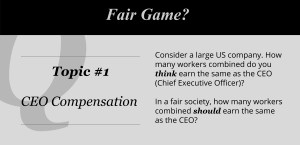
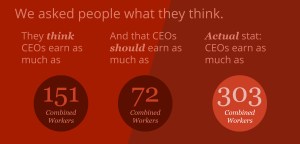
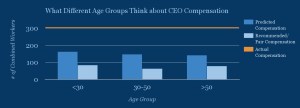
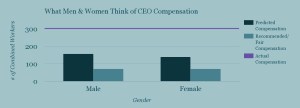
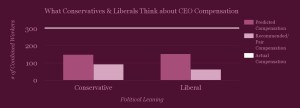

 Tweet
Tweet  Like
Like 